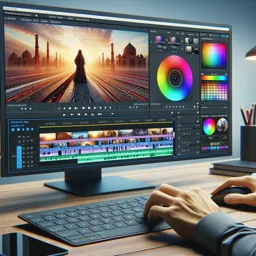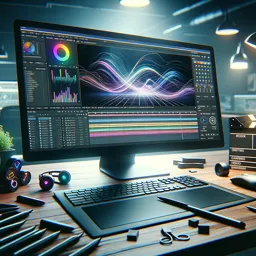Adobe After Effects is a powerful tool for creating professional motion graphics and stunning visual effects.Whether you’re a beginner or an experienced designer, understanding the fundamentals of motion graphics within After Effects opens up endless possibilities for engaging your audience with animated content. In this article, we’ll explore core techniques to build dynamic video projects using shapes, masks, and blend modes in After Effects.
Getting Started with Motion Graphics
Motion graphics blend graphic design with animation, allowing creators to tell stories visually. In After Effects, you can animate text, shapes, images, and other visual assets to create head-turning intros, explainers, transitions, and more.
Creating and Animating Shapes
The foundation of many motion graphics projects starts with shape layers. To create a shape, select the Shape Toolfrom the toolbar and draw directly in your composition. Experiment with different properties like fill color, stroke, and opacity. You can animate these properties by clicking the stopwatch icon next to each property, making shapes appear, disappear, or move across the screen.
Using Masks to Reveal and Hide Elements
Masks are another powerful feature for motion graphics. By applying a mask to a layer, you can control which parts are visible. Masks can be animated to create reveal effects. For example, use the Pen Tool to draw a custom mask around your text or object, then animate the mask path or expansion to unveil content on cue.
Working with Blend Modes
Blend modes change how your layers interact visually. By selecting different blend modes (such as Multiply, Screen, or Overlay), you can create unique looks and add visual interest. For motion graphics, blend modes can be particularly effective for textures, light effects, and layered animations. Experiment with various modes to see which enhances your project best.
Tips for Dynamic Motion Graphics
- Use Ease In and Ease Out: Smooth your animations by right-clicking keyframes and selecting these options for more natural movement.
- Leverage Precomposing: Group multiple layers into a precomp to keep your timeline organized and manage complex animations.
- Apply Effects and Presets: After Effects comes with a rich library of effects. Try applying “Glow,” “Drop Shadow,” or “Color Correction” to give your graphics an extra polish.
Exporting Your Motion Graphics
Once finished, you can export your animation using the Render Queue or Adobe Media Encoder. Set your desired format and quality to ensure your motion graphics shine across platforms.
Conclusion
Motion graphics are a captivating way to bring visual stories to life. By mastering shapes, masks, and blend modes, you can elevate your video projects and stand out as a creative professional. Dive into Adobe After Effects, experiment boldly, and watch your motion designs come alive!
































